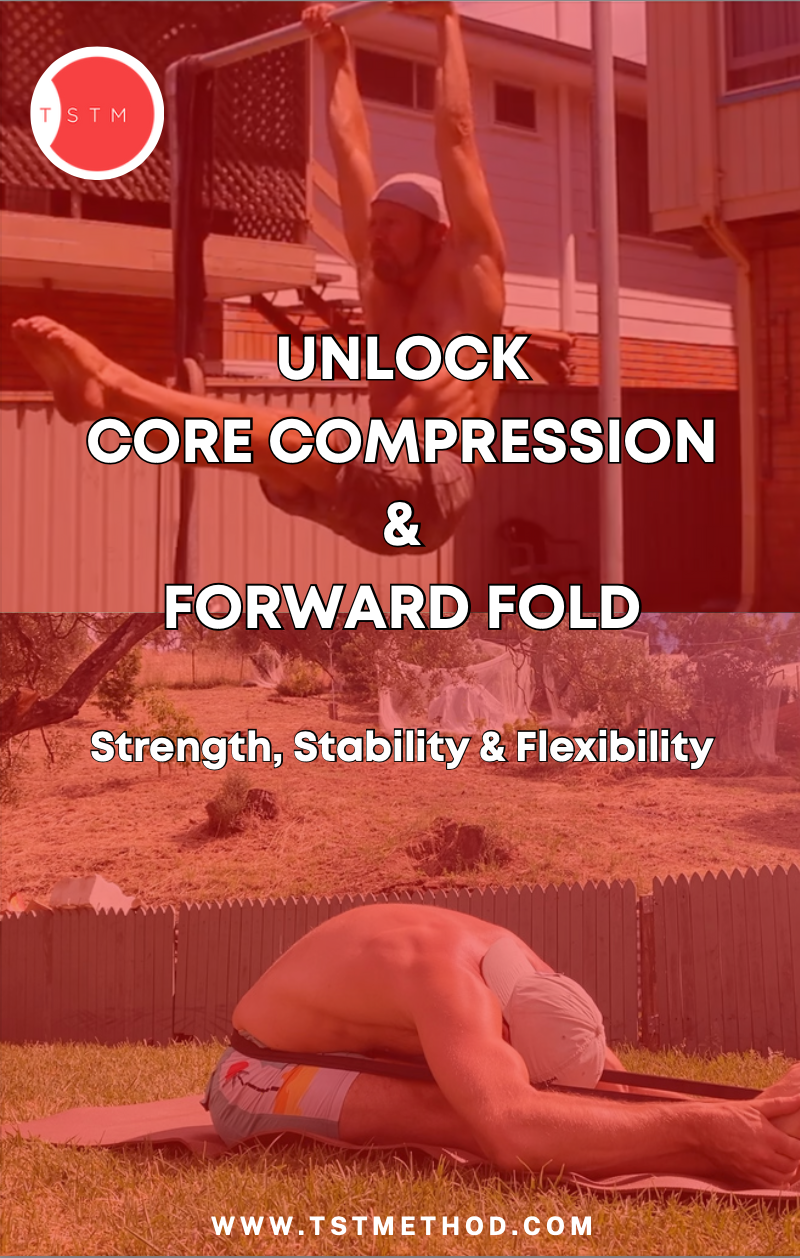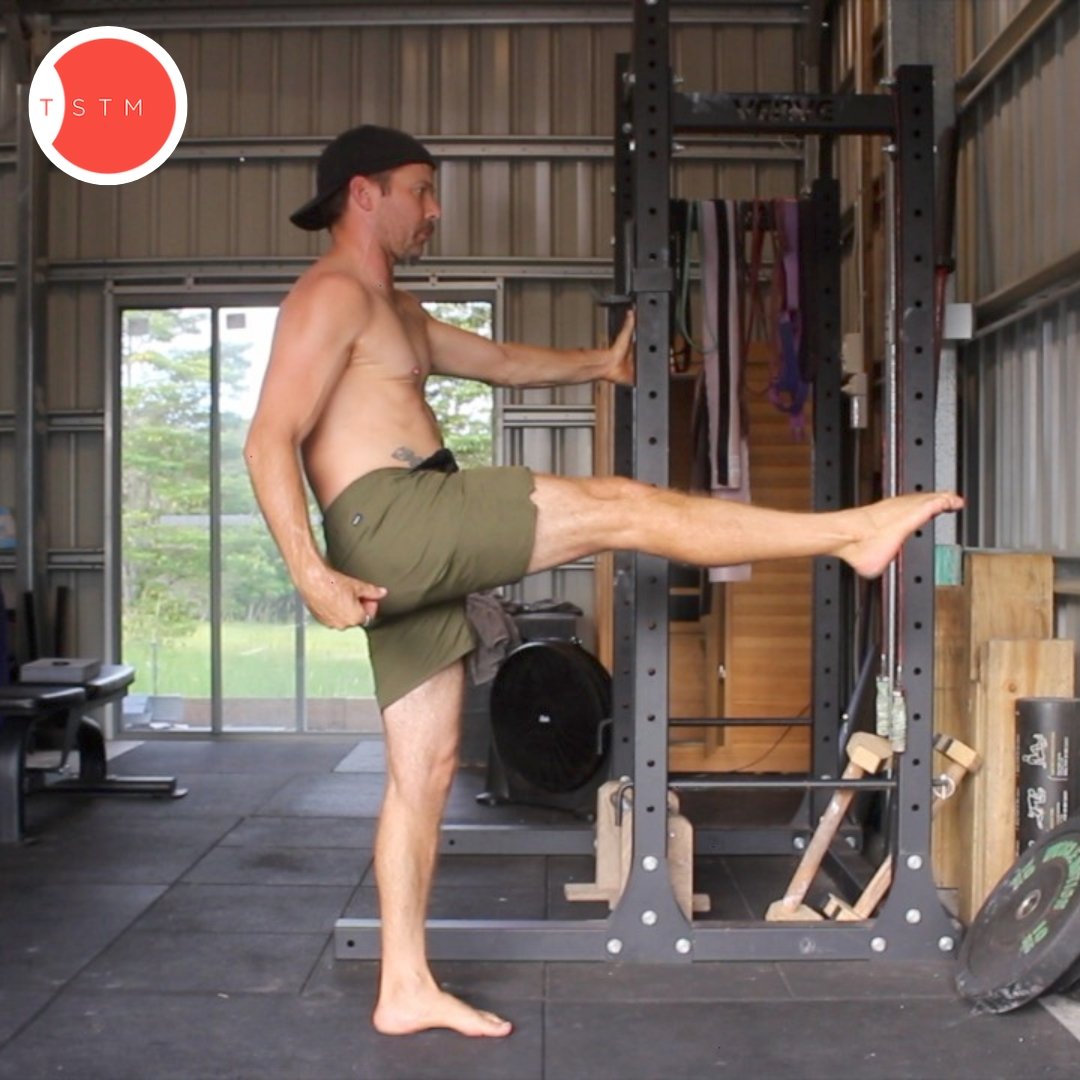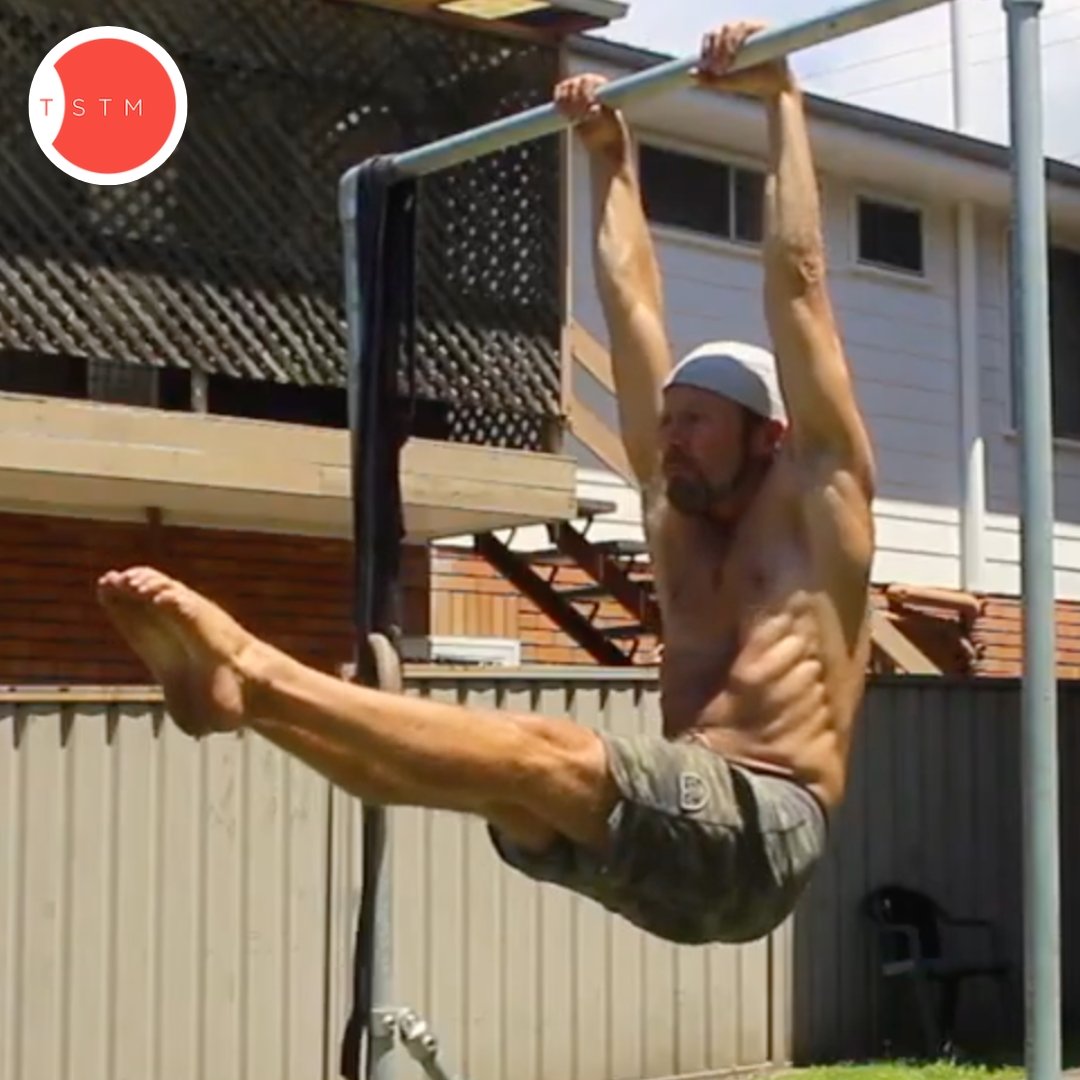FREE Core Compression Strength & Forward Fold Felxibility Program
Designed for adults who want to build core compression strength and touch their toes.
A lot of adults want a stronger core and the ability to touch their toes, but they don’t know where to start.
Maybe you’ve done some sit-ups, hanging leg raises and planks, but your core still feels weak.
Maybe you’ve tried stretching your hamstrings, glutes and calves, but you still can’t hold and L-Sit, get your Toe-to-Bar, perform Pistol Squats, or do a Skin the Cat on gymnastics rings without bending your knees.
As an adult, it’s easy to make excuses that we’re not flexible.
At TSTM, we believe it’s never too late to build strength, increase flexibility, and unlock new gymnastics skills.
Increasing your FORWARD FLEXIBILITY and building CORE COMPRESSION STRENGTH are an essential part staying pain free and maintaining your freedom.
The Core Compression and Forward Fold Program:
1. Stretch and strengthen you posterior chain.
We often overlook the importance of flexibility, especially regarding our hips. Many adults experience back pain because they hold a lot of tightness in their hips. Unlocking your gymnastics pike is an achievable goal for everyone.
You can read about pike training in “How to start training pike flexibility.”
2. Increase Core Compression Strength
Building core strength is essential to unlock movements like L-Sits, Strict Toes-To-Bar, Pistol Squats, Skin the Cat, and Press to Handstand with good form.
Strengthening your lower abdominals and hip flexors also improves hip stability and extension strength, not to mention hip mobility.
You can read more about core compression strength in “How to start training core compression strength.”
3. Increase ankle flexibility
Tight ankles have a massive impact on our posture, squat depth, forward fold flexibility and more. Left unchecked, tight ankles can lead to ankle, knee, hip and lower back pain.
When working to improve pike flexibility, we need to lengthen and strengthen the muscles of the ankles.
You can learn more about ankle flexibility in “A commonly overlooked part of pike and pancake flexibility”
4. Build a foundation of strength and flexibility
A lot of adult gymnastic skill seekers fail to unlock gymnastics skills because they lack strength and flexibility. Pike flexibility and core compression strength are essential for movements such as L-Sits, V-SIts, Toe-to-Bar, Pistol Squats, Skin the Cat, Press to Handstand, and more.
If you fail to build strong foundations, you’ll always find it hard to progress towards your gymnastics goals.
Program Details
There are six phases of training.
Each phase is 4-6 weeks long.
There are two sessions per week in each phase.
Each session is roughly 15-20minutes of training.
Equipment List:
Dumbbells
Low elevation for calf raises
High elevation for stretches (box or bench)
Yoga block
Pull-up bar or gymnastics rings
Barbell (optional)
Core Compression and Forward Fold
FREE
$600.00AUD
How the program works?
Receive six separate 4-6week training phases.
Video tutorials for all exercises.
When you download The Core Compression and Forward Fold, you’ll have access to all of these goodies right away.
CC & FF - Phases 1-3
The first three phases of the program are very similar. Each consecutive phase is designed to progress the previous phase gradually. Phase by phase, strength and flexibility will improve and prepare you for the program's second half.
DAY 1:
Each day 1 session in the first three phases has three exercises.
The first exercise is designed to strengthen and length the hamstrings while also teaching you to move the pelvis into an anterior pelvic tilt (APT). The goal is to maintain a flat back and progress to the point where the torso is parallel to the floor.
The second exercise is a supine core compression exercise designed to strengthen the hip flexors muscles. Maintaining a straight leg while lifting it past 90 degrees of hip flexion is the goal.
The third exercise is a bent-knee calf raise designed to strengthen and lengthen the calves. There is no defined goal here, but you will notice an increase in ankle flexibility by the end of the three phases.
DAY 2:
Each day 2 session in the first three phases has three exercises.
The first exercise is both a core compression and forward fold flexibility exercise. The goal is to contract the muscles of the anterior chain while lengthening the posterior chain muscles.
The second exercise is a hanging core compression exercise designed to strengthen the deep hip flexor muscles. We use the same hanging L-sit progressions for all three phases, allowing you to gradually increase the lever length and overload the hip flexor muscles.
Having the knees above the vertical line of the hips is essential to help target the right muscles. Don’t try to race ahead in the progression unless you can achieve this goal.
The third exercise targets glute flexibility and helps lengthen the hip external rotators to increase the hip internal rotation range of motion.
CC & FF - Phase 4-6
Phases four to six are very similar. Each consecutive phase is designed to progress the previous phase gradually. Phase by phase, strength and flexibility will improve and prepare what’s to come.
DAY 1:
Each day 1 session has three exercises.
The first exercise is designed to strengthen and length the hamstrings while stretching the Achilles tendon to increase ankle dorsiflexion. The goal is to maintain a flat back and progress to deeper ranges of motion.
The second exercise is a standing core compression exercise designed to strengthen the hip flexors muscles. We are keeping both legs straight while lifting the working leg to 90 degrees of hip flexion or above it the goal.
The third exercise is a calf raise designed to strengthen and lengthen the calves. There is no defined goal here, but you will notice an increase in ankle flexibility by the end of the three phases.
You get all three phases for:
FREE
$600.00AUD
🌟 Why Choose Our Program?
✅ Gymnastics Expertise: Our program has been crafted by coaches passionate about gymnastics strength training and understanding the nuances of body control, balance, and strength. We've distilled years of experience into a comprehensive program that will guide you toward achieving the perfect pistol squat.
✅ Progress at Your Pace: Our program caters to all skill levels, whether you're a complete beginner or an intermediate adult gymnastic skill seeker looking to refine your skills. Each program phase builds upon the last, offering a structured and adaptable approach to skill acquisition.
✅ Sustainable Training: We don't just focus on the pistol squat alone. Our program integrates a variety of gymnastics-inspired exercises that enhance your overall body awareness, flexibility, balance, and strength, setting the stage for your pistol squat success.
✅ Comprehensive Workouts: Unleash your body's potential with carefully curated workouts that focus on building the balance, strength and flexibility required for the pistol squat. Our workouts are designed to maximize your progress while minimizing the risk of injury.
✅ Video Tutorials: Visual learning is powerful. Our program includes detailed video tutorials that break down every aspect of the skill. You'll have a front-row seat to proper execution, ensuring you understand and master each technique.
✅ Personalised Support: We're here for you every step of the way. If you have questions, need feedback, or want to share your progress, our dedicated support team is just an email away.
Core Compression and Forward Fold FAQ’s
What equipment do I need?
You will need to have access to the following list of equipment:
Dumbbells/Kettlebell(s) - a weight that you can use for movements like split stance RDLs.
An Elevated surface such as a box, kitchen chair, or a stool
An Elevated surface such as a Reebok step, weight plates, or stairs to perform calf raises on
A pull-up bar, set of gymnastics rings, or a tree branch that you can hang from
A barbell, weight plates or heavy dumbbell/kettle bell for seated calf raises.
All of this equipment can be purchased online and set up in your home and most gyms will have this equipment.
Are there any prerequisites?
No. As long as you’re injury free and up for the challenge.
If you’ve got an injury it would be best to ask your physio is this program would be suited to you, or get in touch regarding individual coaching.
What's the commitment levels?
2 x 15min sessions per week
12-18weeks of training - this depends on your individual level of progress, consistency and lifestyle factors.
Can I combine core compression and forward ford training with my other training sessions?
Yes. We recommend you do. You can either add these 15min session to the end of an existing training program, or perform them on a separate day.
Can I use a phase for more than six weeks?
You can, but you might find that progress starts to slow down. We stick to a program for a short period to allow the body to adapt to the stress of the training program.
After 4-6 weeks, the progress can start to slow down, which is a sign that a new program is required. A new program is a new set of movements that apply new stress to the body and cause it to adapt.
I've been in the same training phase for six weeks now, but I still don't feel completely comfortable with all the movements. Should I move on?
One option is to move on to the next phase and keep working once or twice a week on the drills you felt could still be improved. Doing precisely the same for too long can make the session feel tedious, and we want to be excited about going to train.
With this in mind, everyone is different, and if you aren't bored of doing the same, there's no harm in sticking to the same plan a little longer.
Move on to the next phase and see how you go. You can always go back a phase if/when you need to.
I got injured while training. What should I do?
Oh no!! Injury is a normal part of training. It happens to the best of us. It's best to keep moving if you can, but we don't suggest working through
pain.
If you've got pain, seek the help of a specialist.
I will be going on holiday for a week. Should I try to keep training?
This is entirely up to you. One of the positive aspects of having a program to follow is that you can continue to train if you have access to the equipment. In the case of the core compression and forward fold, you can take your equipment with you. This would allow you to continue following most of the program and possibly enjoy training outdoors in some beautiful nature (depending on your destination).
If the rings don't fit in your suitcase, don't beat yourself up for taking a week off, it may even be good for you!
I feel exhausted from work/not getting enough sleep. Should I try and do my session nonetheless?
If you're tired, you'll benefit more from taking a day off than forcing yourself to do something that will cause more physical and emotional stress.
You can make up for your session another day!
Can I repeat the sessions more than once a week?
There's no need to double up on the sessions, but if you find yourself having time and loving the program, we advise you to pick a few incredibly challenging drills and work on them on a different day of the week.
This can be done playfully, without the structure of the other sessions (but with mindfulness, always).
Can I split the session if I am short on time?
Yes, there's no harm in breaking the session into smaller amounts. However, core compression and forward fold flexibility assist each other. If you’re going to do less, we’d recommend cutting back on the total number of sets and not removing exercises altogether.
You should always include the warm-up to prepare the body for the sessions. Consistency is the key to progress; as long as you practise the two sessions once a week, it doesn't matter how you distribute them during your week. Do try to have at least a rest day between them.
What if I cannot do one of the exercises?
Bugger! If you are having trouble with a particular exercise, you can either skip it or take a video and send it to training@tstmethod.com, and we will do our best to offer some advice.
It would be best to talk with your physio if you have any limitations or problems with specific movements due to pain or discomfort.
Can I train effectively from home, or is it better to get a gym membership?
The program can be done from home if you can access the equipment listed in the "Equipment Needed" section. Some pieces of equipment can be substituted with creativity and depending on availability.
I don't feel like I'm making any progress. What can I do?
It's extremely unlikely you won't be making progress. We encourage all students to record videos of themselves performing the exercises and to store them for future checks.
You may be surprised to see how much better you're doing.
Secondly, there's a saying that "fatigue masks fitness": you may not realise how well you're doing while constantly training. Taking a short break to rest and recover can sometimes be the key to noticing the difference.
I need more guidance/support to feel motivated. How can I get that?
We offer personal program design for those needing more support and daily coaching interactions.
I've worked on my flexibility and didn't see results. How is this different?
It takes more time to develop flexibility than strength; chances are you didn't stick to a program long enough. A good flexibility program requires structure and consistency.
It's possible that the program you previously wasn’t created for you. The TSTM Core Compression and Forward Fold program has been created for adult gymnastics skill seekers. We’re pretty sure we can help this audience make GAINZ!










